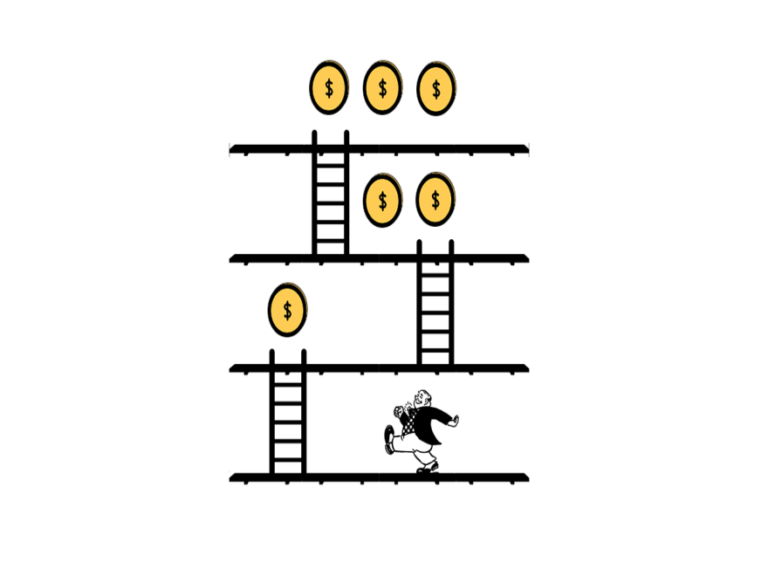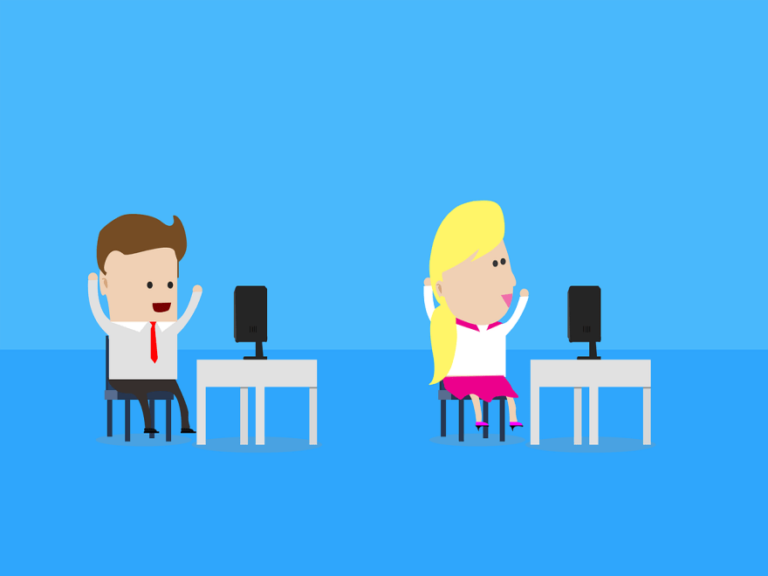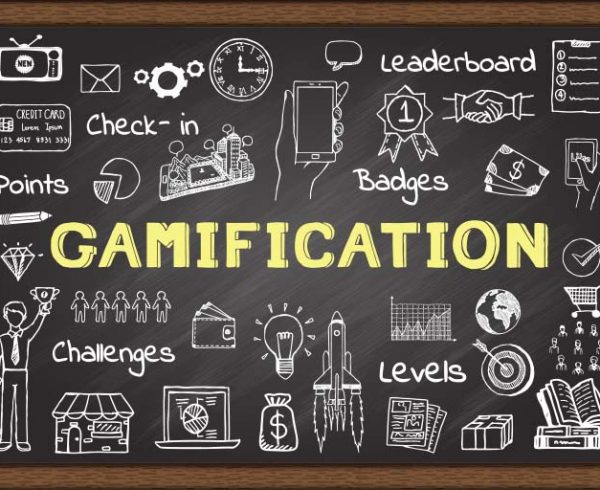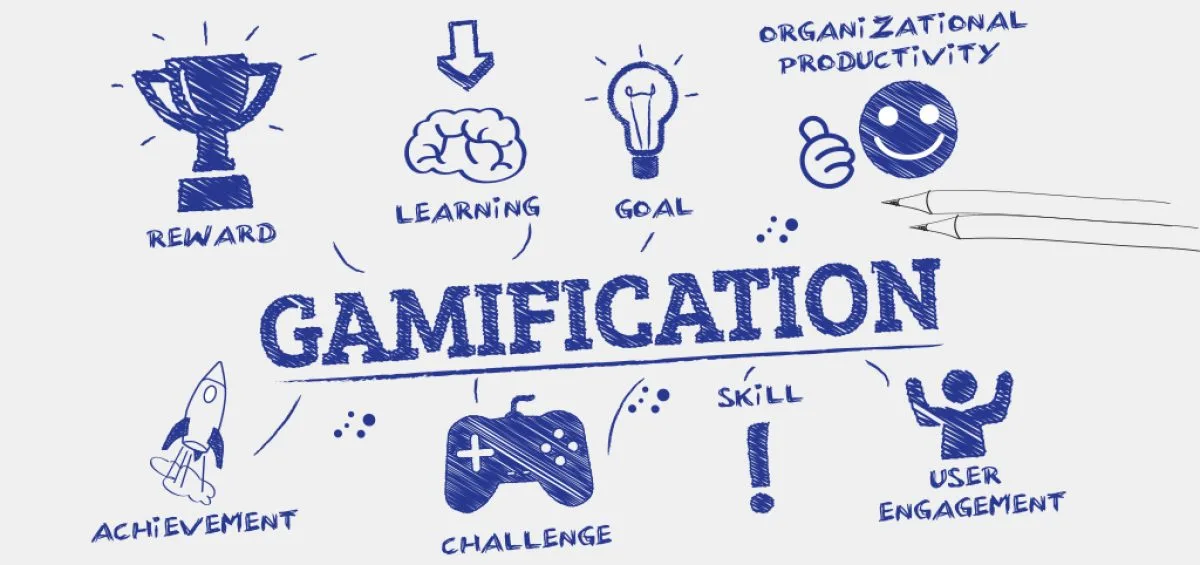Gamification in the workplace is the new way to boost your team’s performance. Over the years, gamification has become a norm in many workplaces. It is applied to various e-Learning strategies as well as in employee training all over the world. Companies such as Google and Domino’s Pizza use gamification to drive their employees towards performing better.
What is Gamification?

It is defined as the application of game design and elements to non-gaming contexts. It uses the principles of gameplay, such as setting goals and allowing those who have achieved said goals to reap the rewards, as a sort of motivation for better performance.
Gamification is a clever way to make work more enjoyable for employees. By tapping into the human need for instant gratification, and recognition & reward for their work, gamification in the workplace pushes employees to put in more effort and achieve more. Not only that, it also reduces employee turnover as job satisfaction soars.
The Merits of Gamification in the Workplace
Apart from serving the basic human need for recognition, gamification also brings an array of other benefits to the table –
- Pushes Employees to Think Out of The Box
“Necessity is the mother of invention” – true to the saying, the need to solve a problem drives employees to discover and create newer and more innovative ways to resolve an issue at hand. This not only drives up productivity, but it also allows for the birth of new and revolutionary technologies. - Long-term Retention of Knowledge
In most companies, teams often find themselves with problems that they have already encountered in the past. However, they cannot seem to find records of how they solved it in the first place. With gamification, thanks to active participation from everyone, the knowledge is not lost. Moreover, due to the high interest in innovative solutions, the impact of such knowledge is far more deep-rooted. - Increased Participation
With goals being set up and wins being rewarded, every employee finds themselves with the will to achieve. As a result, active and deeper participation by employees is one of the most prominent impacts of gamification in the workplace. - Increased Job Satisfaction
Gamification ensures a monotony-free workplace. Instant rewards and the challenge of solving time-bound problems makes work all the more interesting. In turn, job satisfaction soars as employees start enjoying the time they spend at work.
Related: Gamification in Corporate Training: Your Checklist for Training Success
Designing Gamified Training Modules
It is in every employers’ best interest to have happy and engaged employees. When the staff is unhappy and disengaged, they do not care for the products they build or the services they provide. This will affect the overall productivity. To avoid this, gamification is definitely one of the best ways forward.
Before running with a design, let’s reiterate what gamification of a training module means –
- It is simply the application of game design and elements to a non-gaming situation, which, in this case, is a training module.
- Allowing the employees to solve simulations of real-life problems within a safe, no-risk environment.
- Mapping game objectives in order to simulate gameplay.
- With all this in mind, let us delve into two examples.
Gamification in the Workplace – Example 1
Imagine designing a module to train employees on “Website Designing”.
Just like gaming, we’ll first divide this into levels. For web design, there are three main components –
- Designing the layout.
- Creating the separate elements of the layout.
- Putting it all together.
In a gamified module, each of these components will be a gaming level. For example, once an employee finishes the layout for the website, they will be rewarded for completing level one of the exercises. Same goes for the other two components.
To make things more interesting, one can apply a point system to the exercise. This taps into the inherently competitive nature of the employees and allows them to engage in the activity.
Gamification in the Workplace – Example 2
Imagine a soft-skills training module for managers for interviewing prospective employees.
Again, like gaming, we will divide it into levels –
- Selecting resumes to call back.
- Conducting face-to-face interviews.
- Evaluating candidates to choose the right fit.
Like the previous example, each level will have reward points as well as penalties. For example, in level one, choosing a correct resume will add points, whereas choosing the wrong candidate will deduct points. At the end of the module, the ones who managed to choose the right fit will end up winning the game.
Ensuring Success of Gamification Efforts
Like any other effort towards improving the workplace, gamification can also fail. Employees can simply not warm up to it, or the execution may be faulty. In order to ensure that does not happen, one must first take a look at why gamification might fail in the first place-
Disengaged Employees – Sometimes, the problem may not be the workplace or the execution. An employee simply may not be the right fit. They may not enjoy the work enough or may not be interested in participating. In such a case, irrespective of the effort that is being put in, due to lack of employee participation, gamification efforts are guaranteed to fail.
Overuse – Sometimes, companies tend to throw in solutions irrespective of the problem. Gamifying every aspect of work may not leave room for employees to enjoy the experience. Instead, they may feel overburdened and overtly monitored. In such a situation, productivity will fall.

So, what can be done to ensure that the efforts towards gamification in the workplace succeed?
- Respond to the need of the situation– The first and most important step is to understand the needs of the team. Once the problem has been understood, apply gamification to build a solution, instead of randomly burdening employees with just another corporate exercise.
- Pick the right elements – Gaming is complex, and more so when you are using game designs and related elements in a non-gaming context. Therefore, it is important that the elements and features used to create a gamified solution fit right in, with the team of people who will use it, and comply with the workflow. A seamless integration makes it feel effortless and a part of everyday work.
- Design the right user experience– Ensuring that the people who are part of the experience feel at ease while participating will definitely help your efforts succeed.
- And last, but not the least, make it fun– Gamification is aimed at making the workplace enjoyable. Unless the experience in itself is fun, employees will not engage. As a result, the efforts will not be successful. Therefore, create a design, test it out on a small group, iron out the rough edges, and, most importantly, ensure it’s a fun experience before rolling it out. Here are 5 Effective Strategies for Gamification at Work.
Gamification in the workplace not only increases productivity, but also ensures deep-rooted and long-term learning due to its interactive nature. It builds natural camaraderie between colleagues and improves team morale, thereby increasing their capacity to work more effectively together.
Related:











